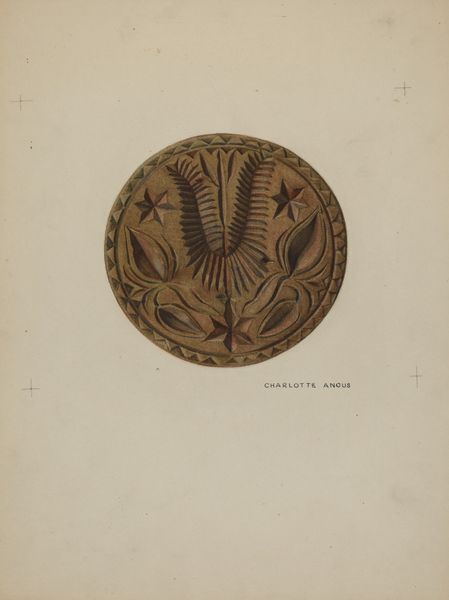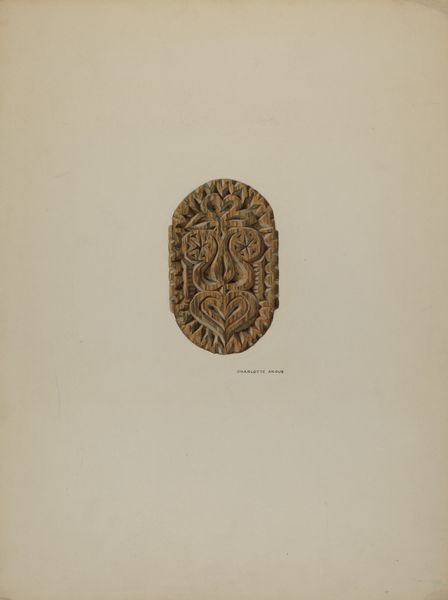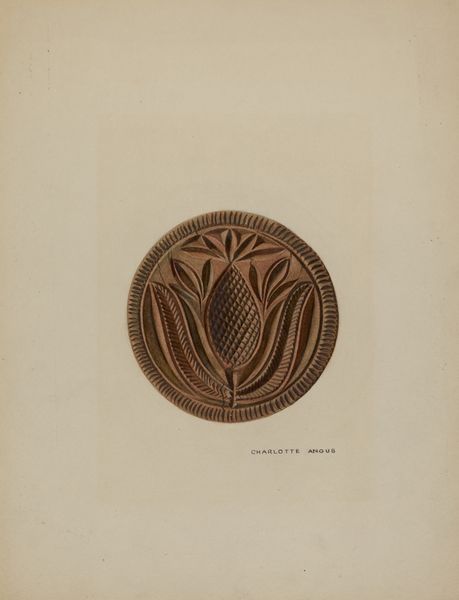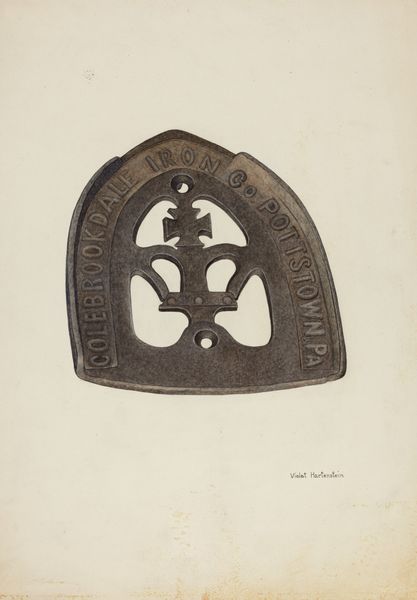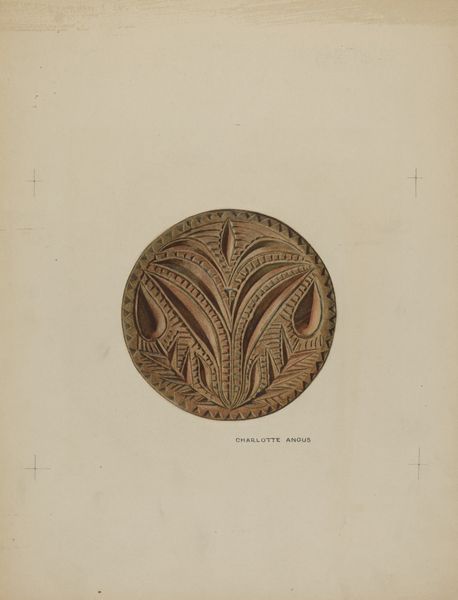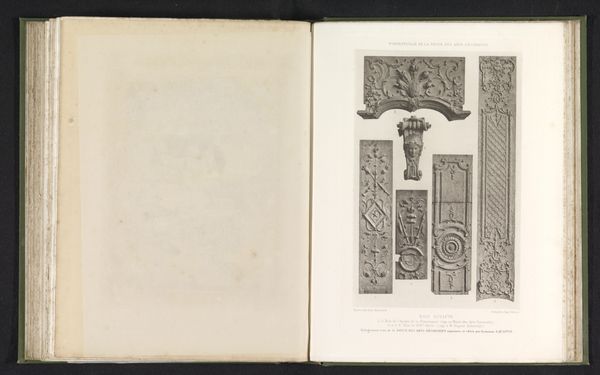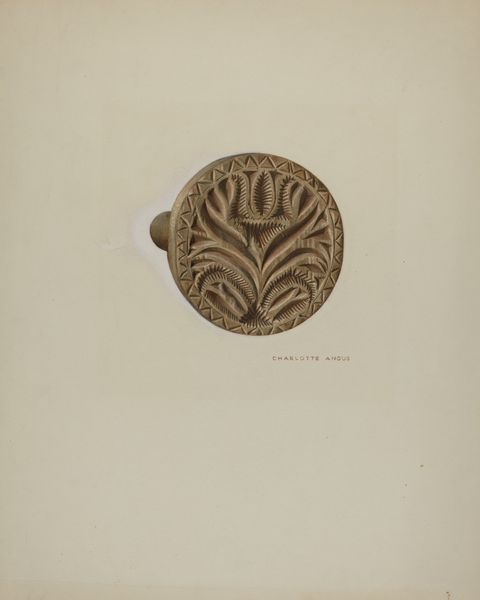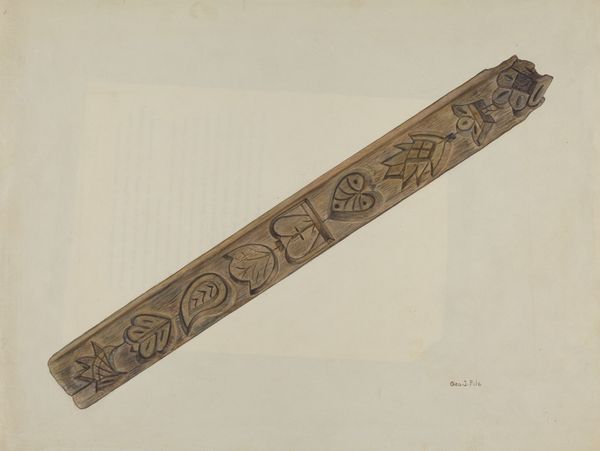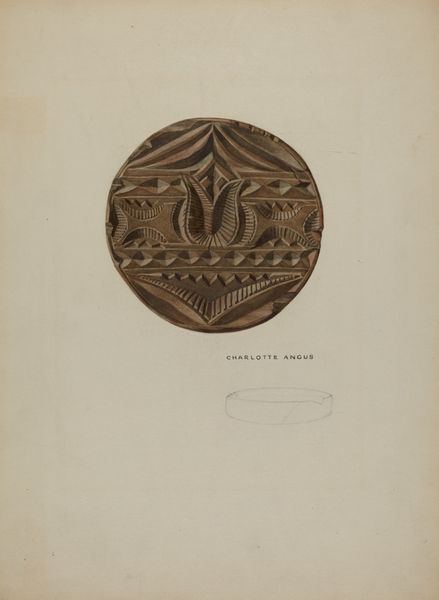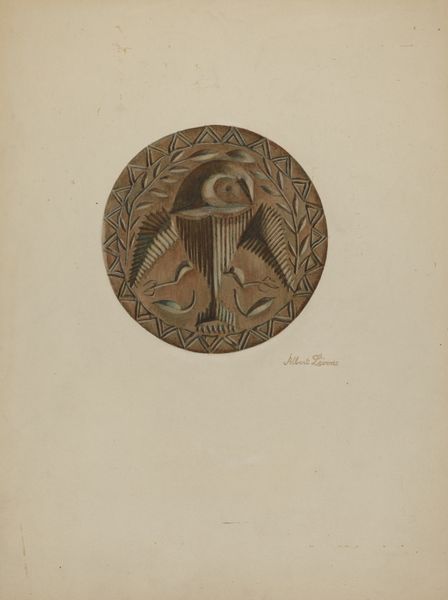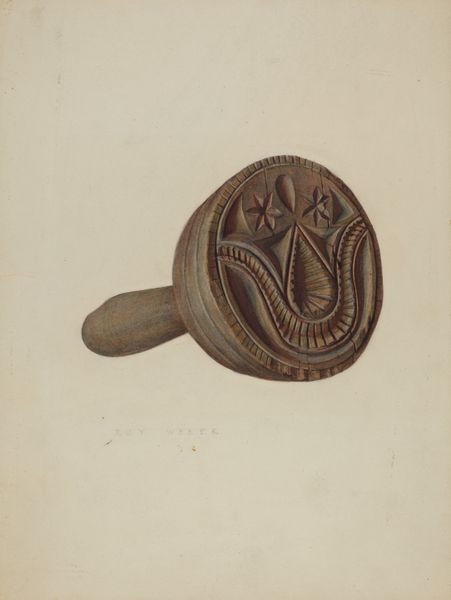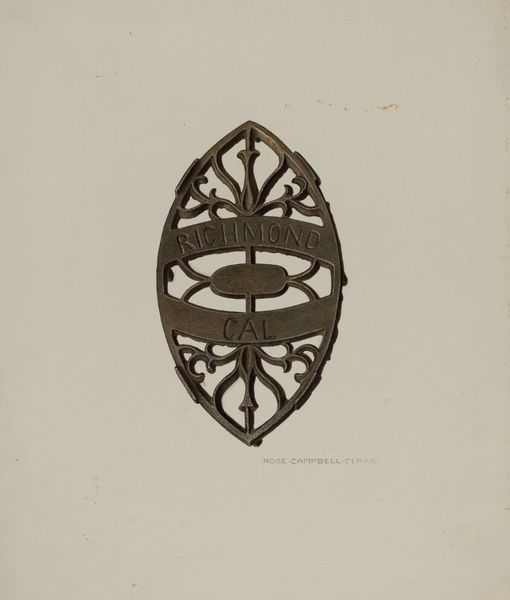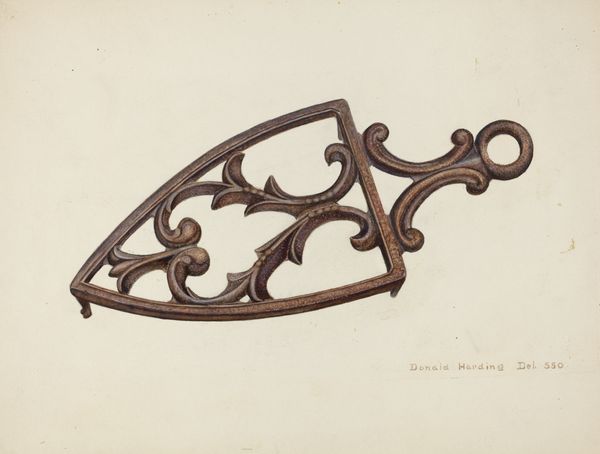
drawing, graphic-art, pencil, wood
#
drawing
#
graphic-art
#
pencil
#
wood
Dimensions: overall: 25.5 x 31.6 cm (10 1/16 x 12 7/16 in.)
Copyright: National Gallery of Art: CC0 1.0
Curator: Here we have Elmer R. Kottcamp’s *Grain Sack Stamp* from around 1940, an elegant pencil and wood rendering. Editor: It possesses a remarkable starkness, doesn’t it? The way those bold, dark lines define the shape, contrasting against the pale ground—it feels quite austere and strangely powerful, despite its humble subject. Curator: Indeed. Function shaped its form. Consider how this graphic art piece embodies the transition between agricultural traditions and the burgeoning industrial design aesthetic of its time. The grain sack, a basic necessity, now elevated through artistic representation. Editor: I find myself immediately drawn to the stylized initials at its center—a unique set of floral forms. Can you expand on how it communicates beyond just basic utility and ownership? Curator: Certainly. The arrangement creates visual symmetry, the composition directing our gaze through its careful patterning. The flowers are balanced by more angular lines at top and bottom. And yet, it is not utterly symmetrical because it has a distinct top, bottom, left, and right, adding dynamic tension. Editor: So you’re suggesting it mirrors anxieties linked with identity during that historical moment? This artwork might subtly point toward the changing social landscape. Curator: It absolutely acknowledges the identity and aspirations inherent in something as mundane as grain storage in its era. Rural communities faced huge pressure. A stamp like this broadcasts the hope that their product—and, by extension, they—will stand apart. Editor: Interesting. The very act of marking each grain sack becomes a quiet assertion of belonging within a world experiencing transformation. This simple object provides a space to reflect upon larger cultural meanings. I hadn't initially grasped such a context. Curator: Precisely! Its unassuming aesthetic actually veils profound social complexities. Understanding this layers so much onto its appreciation. Editor: Well, I now perceive its symbolic gravity—transforming what I initially observed into a rather affecting encounter with cultural resilience. Curator: And on my part, this exercise reinforces my conviction in art's ability to echo society in the arrangement of shapes.
Comments
No comments
Be the first to comment and join the conversation on the ultimate creative platform.
